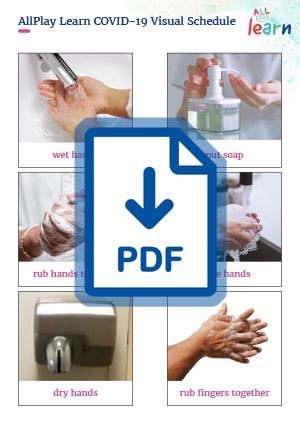
Handwashing skills
and routines
With children returning to on-site learning, new routines such as increased handwashing will be introduced. Some children may need additional support to master this new skill or to adjust to the new routine.

Strategies
- Display visual prompts or a schedule. This may include a schedule showing when handwashing will occur, and images in bathroom areas demonstrating the steps for handwashing.
- Repetition. Some children may need lots of brief prompts, repetition and short step-by-step instructions when first learning this skill. These supports can be gradually reduced as children become more proficient.
- Practice at home. Ask families to practise with their child at home, using hand-on-hand guidance if needed.
- Embed handwashing into daily routines. Children learn skills more quickly, and experience less frustration or distress, when it is part of a regular routine.
- Learning is best when children feel calm. If a child becomes distressed or agitated when learning this skill, take a break, and try again when they’re feeling calm.
- Show them how to wash their hands. Show children how you wash your hands, and show them videos of people washing their hands. Videos/modelling that show each step are best.
- Use music. Songs about handwashing can help children remember the steps. Access songs online, or write your own.
- Ensure everything is within reach. Make sure all materials they need are easily accessible.
- Seek support if needed. Seek support from families and the child’s health professionals if they need further support to acquire this skill.

